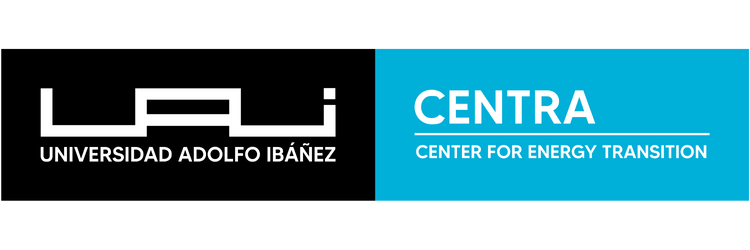
Chile needs a national roadmap to digitize its electricity system
November 3, 2025
Digitalization is redefining the way Chile operates, manages, and protects its electrical system. From phasor measurement units to digital substations, the country is moving toward smarter and more flexible grids, although challenges remain in interoperability, regulation, and the adoption of smart meters. Luis Gutiérrez, professor at Universidad Adolfo Ibáñez, tells us more about this topic. In recent years, what have been the main advances in the digitalization of Chile’s electrical system? In recent years, we have seen significant progress in different layers of the system. In transmission, for example, real-time measurement has been strengthened with the incorporation of phasor measurement units (PMUs) and advanced measurement modules that improve the system’s observability. In distribution, companies monitor and record the most relevant electrical variables at the head of medium-voltage feeders according to the Technical Quality Standard for Distribution Systems, and they have also been advancing in incorporating monitoring at the level of secondary transformers in the network and remotely controlled operation equipment. However, the main bottleneck to advancing the digitalization of the network is the slow adoption of smart meters by end users, which stems from a history of rejection following the social unrest, keeping low-voltage networks largely isolated from digitalization. In this sense, it is worth noting that customers who have adopted solar generation have had to replace their meters, indirectly supporting the digitalization of low-voltage networks. Finally, it is important to highlight the work of universities and research centers such as CENTRA, which today have laboratories and simulators capable of testing advanced management and control solutions in realistic environments.
What challenges does Chile face to advance toward a truly smart and flexible grid? From a technical standpoint, one of the main challenges is interoperability between devices, platforms, and communication protocols. We also face challenges in telecommunications infrastructure, especially in rural areas, where low latency and network availability are key to real-time operation. At the regulatory level, the challenge is to create a framework that encourages investment in digitalization. Today, distribution companies do not have clear mechanisms to recover investments in smart metering systems, and there is still a lack of a concrete definition for the role of the future Distribution System Operator (DSO). Furthermore, it is urgent to make progress on data access and privacy standards, as well as on schemes that remunerate flexibility and demand response services—issues that should be addressed in an eventual reform of the distribution sector.
How does digitalization impact the stability, efficiency, and resilience of the electrical system, considering the high penetration of renewable energy? Digitalization is a key enabler for operating systems with high renewable participation. Thanks to greater observability through PMUs, advanced SCADA systems, or smart meters, it is possible to anticipate and respond more quickly to variations or contingencies. On the other hand, digital platforms allow for improved dispatch, reduced technical losses, and more efficient congestion management. This translates into a smarter use of existing infrastructure, postponing or eliminating in some cases the need for network reinforcements. In terms of resilience, having data and bidirectional communication makes it possible to coordinate distributed resources, such as storage or electric vehicles, to support the grid during extreme events. Of course, all this requires robust communication networks and a constant focus on cybersecurity.
In terms of smart grids or digital network management, what national experiences can be considered references? There are several examples worth mentioning. The National Electrical Coordinator has promoted the installation of phasor measurement units (PMUs) at various points in the system, positioning Chile among the most advanced Latin American countries in this type of measurement. As for substations, some have been fully digitized for several years through the IEC61850 protocol, where relays receive signals via communication links instead of hard wiring, which is more susceptible to electromagnetic interference. In distribution, there are pilot projects integrating batteries into medium-voltage networks and electric vehicle charging points, which have allowed for testing active management of distributed resources. University laboratories also stand out, where it is possible to conduct tests incorporating the “Hardware in the Loop” concept, which increases industry confidence by testing control and protection algorithms in simulated networks but on real equipment.
In this regard, at UAI we are working on a Virtual Power Plants project that we expect to pilot in 2026 together with SAESA, where we will demonstrate the technical and economic feasibility of providing complementary and resilience services to the system through distributed energy resources operated in a coordinated manner. These projects, although small in scale, are highly valuable because they generate practical experience and help define replicable standards and models for the rest of the system.
From your perspective, what steps should Chile take in the next five years to consolidate the digitalization of its electrical system? I believe Chile has a great opportunity if it manages to combine three key pillars: planning, regulation, and coordinated investment. First, it is necessary to establish a national digitalization roadmap that defines priorities and common interoperability standards. In parallel, progress must be made in the mass deployment of smart meters and data management platforms, always with clear rules on privacy and information access, as well as an important public information campaign and time-of-use tariffs that make adoption attractive for customers. It is also crucial to modernize communication infrastructure—fiber optics, private networks, industrial 5G—to ensure the latency and reliability required by modern network applications, enabling digital twins where different operating strategies can be tested and evaluated before implementation in reality. Finally, the regulatory framework must evolve to recognize digitalization as a strategic investment and allow companies to recover those costs. This includes enabling the participation of distributed resources in the market and defining mechanisms to remunerate flexibility services, which is also the aim of the pilot mentioned earlier. All these steps are essential for moving toward an electrical grid that is truly smart, flexible, resilient, and where distributed energy resources play a key role.
